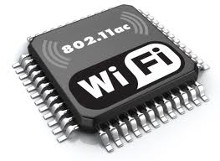High-speed 802.11ac Wi-Fi finally taking off

ABI Research's Jake Saunders, VP and practice director of forecasting, is reporting that while "802.11n device shipments still dominate the market, accounting for more than two thirds of total device shipments; 802.11ac access point adoption is starting to gain traction."

PC sales are in the doldrums, but ABI Research sees a different story when it comes to Wi-Fi hardware. According to this technology market research company, "Worldwide consumer Wi-Fi customer premises equipment (CPE) shipments surpassed 43.3 million at the end of 1Q 2013; a 16.8-percent increase from 4Q-2012."
In particular, ABI Research expects that 1 million of 802.11ac consumer access points will be shipped by the end of 2013. That said, part of this market surge is due to the fact that almost all high-end Wi-Fi routers now come with 802.11ac by default.
In theory, 802.11ac protocol enables speeds of up to 1.3 Gbps as well as better coverage than 802.11n. In practice, while significantly faster than 802.11n, 802.11ac can't really reach Gigabit-per-second speeds except in laboratory conditions. In the real world, its range is also likely to be more limited than the older 2.4GHz 802.11n and 802.11g technologies.
Would-be buyers of this new networking technology should also keep in mind that it can only deliver as much broadband as your slowest link. So, if you're lucky enough to have a 100Mbps Internet connection, your 802.11ac Wi-Fi can only deliver a 100Mbps connection to the Web from your Wi-Fi-equipped laptop or tablet.
ABI found that in the SOHO/Consumer Wi-Fi equipment market, TP-LINK has the top market share with 15 percent, followed by NETGEAR and D-Link with 12 percent and 11 percent respectively. In the enterprise wireless local area network (WLAN) sector, ZTE has the largest market share, accounting for 39 percent of total access point shipments while Cisco holds the second largest market share of 26 percent, and HP Networking ranks third as it overtook Aruba Networks in late 2012.
A new IEEE Wi-Fi standard 802.11ad (WiGig) which uses 60GHz band and delivers speeds up to 7 Gbps was approved in early 2013. However, you won't see these products until the end of the year.
Related Stories: